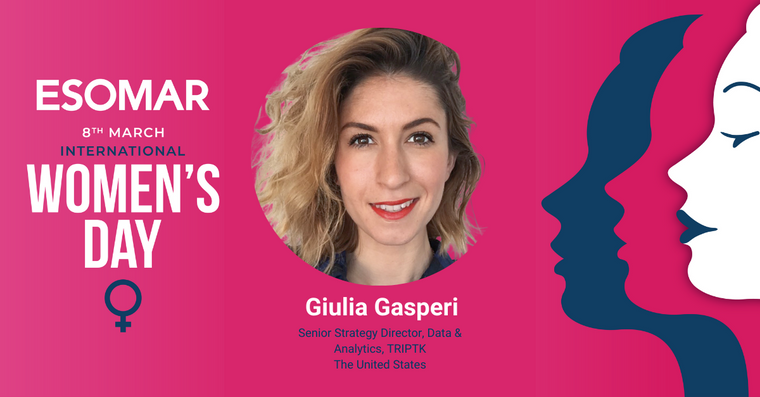How disability inclusion benefits everyone!
Ultimately, it is truly about our relationship to work, and the kind of company one wants to join, build or lead.

Disability inclusion talks and training are on the rise. What are we talking about? Why does it matter? How to make sure we do not fall behind? This piece shows why and how to become a disability-inclusive organisation.
Is the disability inclusion business case true?
An obvious reason for hiring persons with disabilities is: “Because it is mandatory by law”. Most countries have now enacted legislation requiring public and private organisations to hire a certain number of persons with disabilities. This is often associated with a quota-levy system. If the companies do not meet the established quotas, they are fined.
However, organisations gain much more than legal compliance when having staff with disabilities. It is about good business sense. Evidence collected to prove the inclusion business case over the years demonstrates that the more diverse an organisation, the more profitable.
Externally, customers increasingly value brands and companies truly committing to the inclusion of persons with disabilities. This is about public reputation. It better positions your company in your existing markets and gives you a competitive advantage over prospective ones.
Internally, male and female workers with disabilities bring their unique life experiences and insights. Thanks to this perspective shift, they solve problems and can drive innovative solutions differently from their non-disabled colleagues. Diverse teams generate better ideas and create more informed decision-making. Moving further, “disability-inclusive companies report higher levels of retention, engagement and loyalty among their employees.” (ILO, The Win-Win of Disability Inclusion).
Convinced? Next are the key considerations to get there! How do we get there?
Good practices keep repeating it: engaging on the social inclusion path requires prioritisation and resource allocation. In other words, you will need diversity and inclusion expertise, dedicated time and a budget. Moving on your disability inclusion agenda is more likely to be successful when backed up by leadership and senior management from the beginning. Choose a format which suits your company culture: a solemn speech to set the strategic goal, or an internal competition about the best disability and inclusion ideas, with the winner receiving the award from the CEO's hands. You may even consider holding the two at once!
Then, work on two aspects simultaneously. First and foremost, create a disability-inclusive culture within your company. This is about creating a safe and secure atmosphere whereby everyone can openly be, say and behave with their own unique identity characteristics. Any workers, and especially workers with disabilities, must feel that they can show up at work and reveal who they are without fear of being laughed at or, worse, excluded. Sensitisation and training staff on disability diversity and equality are your best ally here. Moving on from traditional awareness-raising campaigns with posters and slogans, gamification brings fun yet powerful ways to reflect on one’s mindsets and attitudes. An example is the Diversity Mural, designed by the ESSEC business school and Belugames. Inspired by the Climate Mural, it takes the form of a collective intelligence workshop with about ten people and a facilitator discussing discrimination and equality based on cards.
Another key point is to put an end to violence and harassment based on disability and any grounds. There are no other ways than to develop internal policies and safeguards, including clear sanctions. A zero-tolerance message must be communicated to all staff members. When reported on, actions must be taken on seriously and rapidly. This will engender a more caring and joyful working atmosphere, which everyone seeks!
The second aspect is more practical and specific to workers with disabilities. It is about creating accessible workspaces. To the broadest extent possible, workers with disabilities should be able to enter and circulate through the company offices without help. They should be able to use the usual information and communication channels, especially online and digital ones. In short, workers with disabilities should be able to work as any of their non-disabled colleagues.
Bear in mind that accessibility is a driver of innovation. Who still remembers that text messages were invented for deaf and hard-of-hearing people? And who is not enjoying one’s remote control while lying on one’s sofa? Right? Then, let’s thank persons with mobility disabilities for whom remote controls were initially designed. Accessibility is also serving everyone. It enhanced user-friendliness when using goods, benefiting from services and circulating buildings. At the same time, it is helpful for your staff should they be affected or temporarily injured.
And, no, providing reasonable accommodation is not expensive. 58% of workplace adjustments involved no cost, and 37% involved only one-off cost (US Job Accommodation Network). Those are the reasons to consider accessibility and work adjustments for persons with disabilities.
Conclusion
The disability inclusion business case is getting stronger. Accessibility improves everyone’s experiences of goods, services and buildings. All staff enjoy a safe and secure place to work daily. Moving on, the disability inclusion pathway benefits everyone within and outside your company. Ultimately, it is truly about our relationship to work, and the kind of company one wants to join, build or lead.
To dive deeper
International Labour Organisation (ILO) Global Business and Disability Network, https://www.businessanddisability.org/mission/
McKinsey work on the inclusion business case: https://www.mckinsey.com/featured-insights/diversity-and-inclusion/diversity-wins-how-inclusion-matters
Why Diversity Matters (2015)
Delivering through Diversity (2018)
Diversity Wins (2020)
Nadège Riche
Founder at CommoningNadège is the founder of Commoning, which aims at changing the ways to social justice by:
Being the link between people: let’s look at what we all have in common.
Being in action: let’s create hands-on tools that makes the complexity of inclusion understandable to everyone.
Nadège is a professional with 15 years of experience dedicated to realising human rights worldwide. She supports projects aiming to promote inclusion of socially disadvantaged groups, with a focus on gender, disability and intersectionality.


